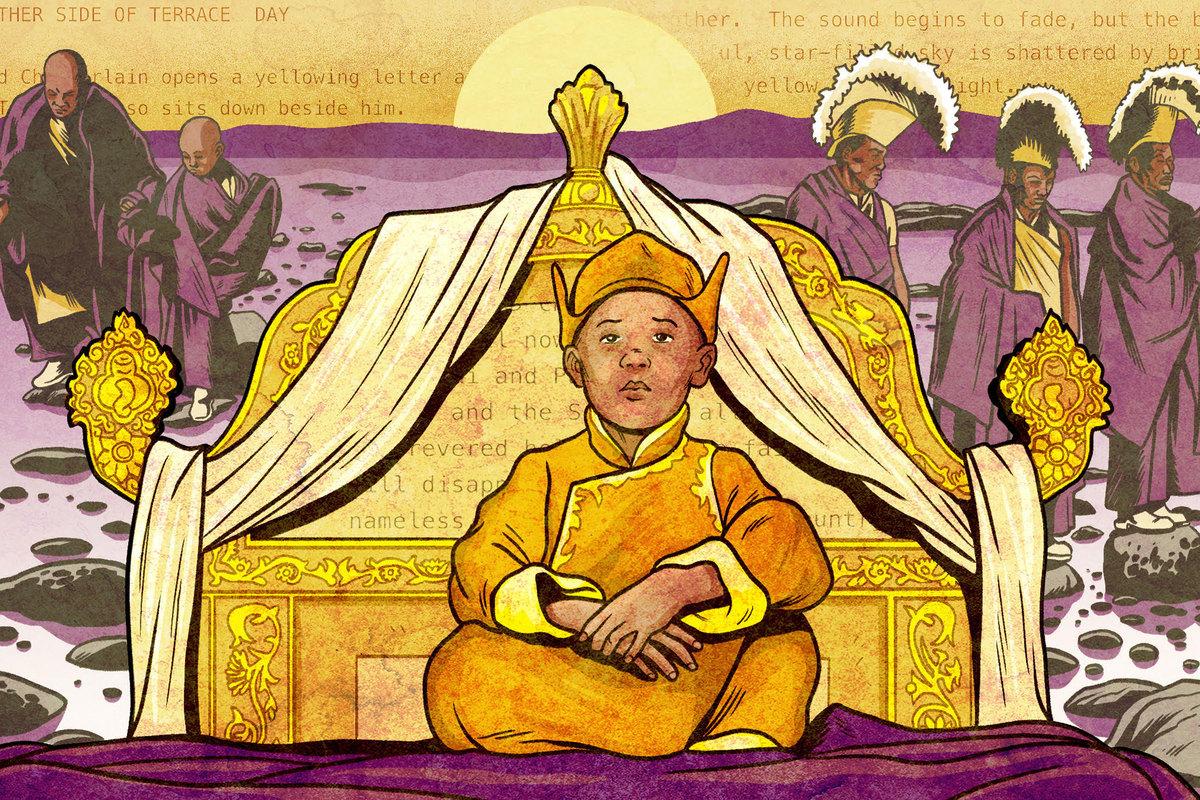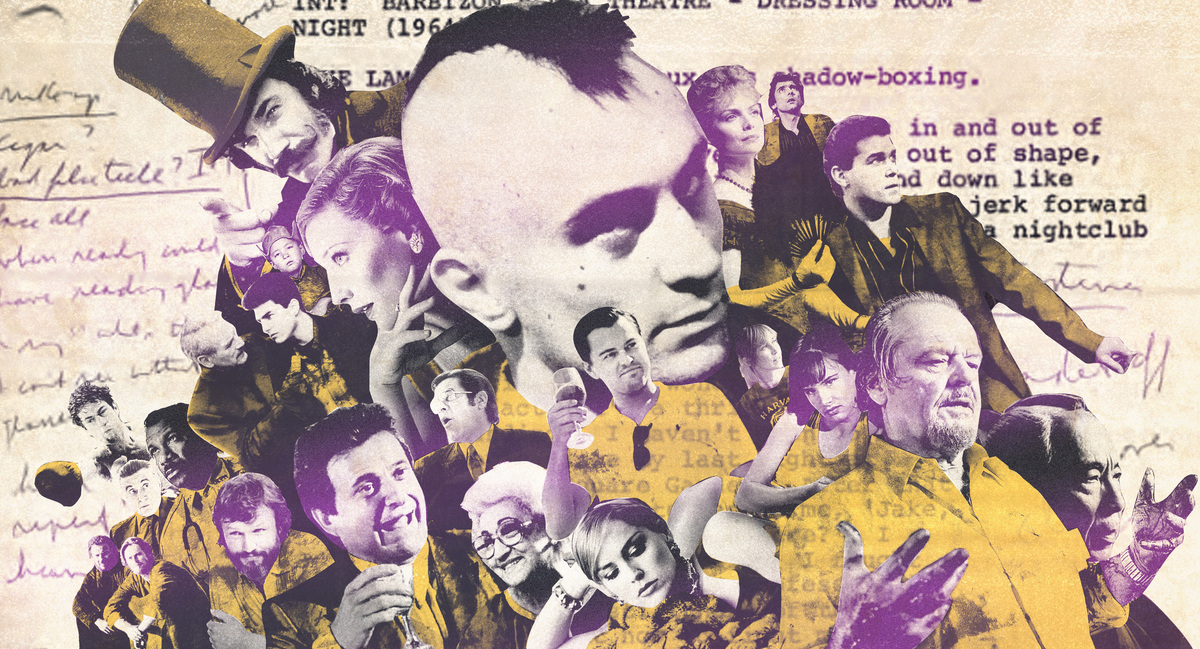
Among the most boneheaded of the many boneheaded volleys in the one-sided battle between Martin Scorsese and fervent superhero movie fans is the accusation that all Scorsese movies are the same. Even if you ignore the vast differences in tone and approach that separate, say, Goodfellas from The Irishman, Scorsese’s filmography contains everything from Edith Wharton adaptations to concert films. He brings signature touches and abiding obsessions to every film he makes, but no two Scorsese movies are alike.
Some, however, are even less alike than others. When it was released in 1997, Scorsese had never made a film quite like Kundun. He’s never made one quite like it since.
Kundun didn’t originate with Scorsese. It came to him. Melissa Mathison was certainly not the only screenwriter to consider taking on the story of the 14th dalai lama, the spiritual and, traditionally, political leader of Tibet. But most screenwriters did not obtain permission from the Dalai Lama himself. Mathison, whose previous screenplays included The Black Stallion and E.T. the Extra-Terrestrial, worked up a treatment that would serve as both history lesson and coming-of-age story. It followed the Dalai Lama from the moment he was recognized as the 14th incarnation of the Tibetan leader at the age of 2 through his decision to live in exile in northern India in 1959. Between those points is the story of Tibet as the nation felt the impact of World War II and, in its aftermath, China’s ultimately successful attempt to annex and take control of the country.
Mathison sent the treatment to the Dalai Lama by way of a Tibetan scholar. When the Dalai Lama expressed interest in the project, she then consulted with him several times: “He wanted everything to be as correct as possible,” Mathison later told The Philadelphia Inquirer. Some of those meetings included readings of the screenplay, performed in part by Mathison’s then-husband, Harrison Ford.
With a Dalai Lama–approved screenplay in hand, Mathison generated interest from studios, initially taking the project to Universal. In the 1998 documentary In Search of Kundun With Martin Scorsese, Mathison recalls being given a list of possible directors and saying, “The only person I want to send it to is not on your list.” After being told she was out of her mind for wanting Scorsese, Mathison pushed back: “I’m not saying he wants to do it. But I know he’s going to get it.”
That only sounds counterintuitive. In the same documentary, Scorsese discusses being drawn to stories of “people who really had the guts to stand up and do things through nonviolence” while making The Last Temptation of Christ. It might seem contradictory that Scorsese made some of his most violent films between Last Temptation and Kundun, but those movies also invariably depict violent lives heading toward soul-destroying dead ends. What better counterpoint to blood-soaked cinema could there be than the story of the Dalai Lama? And what better guide to a spiritual practice that’s unfamiliar to many viewers than a Catholic filmmaker trying to navigate the territory himself?
Kundun plays to Scorsese’s strengths in other ways as well, particularly his ability to depict worlds with distinct moral codes—a trait shared by Catholicism, the mob, Tibetan Buddhism, pool sharks, and 19th-century high-society New York—and the ways one era gives way to the next. Only a little over two decades pass between the beginning of Kundun and its final scene, but it conveys a sense of modernity creeping into the mountain nation even before its annexation by China. The shifting times that Goodfellas and Casino capture via pop songs, Kundun conveys with the introduction of new technology and mass media that brought world events to Tibet’s remote doorstep. A memorable late-film shot of the Dalai Lama with the piercing light of a film projector at his back is both beautiful and ominous. This is the world he’ll have to learn to navigate if he and his people are going to survive.
With its restless but purposeful camerawork and razor-sharp editing by Thelma Schoonmaker, Kundun is stylistically of a piece with Scorsese’s other films. Yet for all it has in common with Scorsese’s other work, some elements set it apart. Its distinctive look is thanks to Scorsese’s sole collaboration with the great cinematographer Roger Deakins, who took on the ambitious project as his follow-up to Fargo. It’s also the only Scorsese film with music by Philip Glass, a practicing Buddhist whose score joins the composer’s trademark looping themes with traditional Tibetan instruments to striking effect.
It’s unusual in other ways as well. The cast is composed largely of nonprofessional Tibetan actors. (Four different actors portray the Dalai Lama at different ages.) Their delivery often makes it clear that English is not their first language, but that plays like an extension of the choice to shoot the film in English in the first place. It might have been a commercial concession, maybe the only one, made by the production, but as much as Glass’s score and Deakins’s candlelit interiors, it plays into Kundun’s hazy, never quite real atmosphere. The movie is history rendered as a dream—and in a few horrifying flashes, as a nightmare.
It’s that quality that most sets Kundun apart in Scorsese’s filmography. The director usually makes narratively muscular films in which every scene serves to push the story forward. (Even The Irishman and Killers of the Flower Moon play lean, despite their three-plus-hour running times.) Structured more like a string of vignettes than a traditional narrative, Kundun stays close by the Dalai Lama’s side and largely limits its perspective to what he can understand.
The scope widens as the Dalai Lama reaches maturity and has to deal directly with the changing political situation that threatens the stability and independence of Tibet, but early scenes are filled with details the young Dalai Lama can see but not yet understand. When lamas in search of their leader’s next incarnation discover him at age 2 (when he’s played by Tenzin Yeshi Paichang) and put him through a series of tests to confirm their discovery, only a shot of one lama’s hand shaking as he struggles to hold a teacup, overwhelmed by the moment, interrupts the sense of serenity. Later, when one of the boyhood Dalai Lama’s closest advisers dies in prison after allegedly organizing an uprising, the film offers few details beyond a quick shot of his death. To the 12-year-old Dalai Lama (Gyurme Tethong), it’s this chilling outcome that haunts him, not the intrigue leading to it. By the time the adult Dalai Lama (Tenzin Thuthob Tsarong) visits Mao Zedong (Robert Lin), his understanding of how the world works has grown. Mao’s hospitality and promises ring false. And when the chairman smilingly informs his guest that “religion is poison,” he understands the threat behind the smile. The film concludes with the Dalai Lama’s long, difficult flight to India, an act of defeat and defiance whose outcome the film, like history itself, leaves undetermined.
Referring to the studio era in the 1995 documentary A Personal Journey With Martin Scorsese Through American Movies, Scorsese speaks of directors who adopted a “one for me, one for them” approach in choosing projects. Scorsese’s own career hasn’t always mapped onto this pattern, but the instances when it has have been hard to miss. Kundun now looks like Scorsese’s biggest one for me, a project made possible by his biggest one for them, Casino, which reunited much of the cast and creative team responsible for Goodfellas for another sprawling crime story.
There’s an implicit promise of support when a studio takes on a director’s one for me. To its credit, Disney made Kundun after Universal dropped it—but that’s pretty much where the credit ends. China warned Disney about releasing the film while it was still in production in 1996, and though the New York Times headline covering the company’s response—“Disney Will Defy China on Its Dalai Lama Film”—is technically true, the defense proved both half-hearted and half-assed. After giving the film a limited Christmas Day release in two theaters, the company rolled it out to 439 theaters on January 16 without much fanfare. It quickly wilted (some restrained-for-a-Scorsese-movie reviews probably didn’t help). Then the groveling began.
In October 1998, Disney CEO Michael Eisner met with Chinese premier Zhu Rongji to discuss plans to build a Disney theme park in China. Of Kundun he said, “The bad news is that the film was made; the good news is that nobody watched it.” He continued, adding, “Here I want to apologize, and in the future we should prevent this sort of thing, which insults our friends, from happening.” Nevertheless, China essentially made Disney submit to a boar on the floor–like humiliation before allowing the company to release Mulan in China the following year: Disney had to buy the distribution rights to a pair of Chinese films and hire a Chinese performance group to help promote Mulan in Europe.
Shanghai Disneyland opened its doors in 2016. As of 2023, Kundun remains unavailable on any streaming service. (The only legal way to watch it is via Kino Lorber’s typically well-executed Blu-ray.) Still, though it can be cold comfort to those who made it in such situations, the film exists. It was made, it was released, and despite Eisner’s comments, it was seen and admired. (On the other hand, the film’s images of a mandala being made and swept away suggest an understanding of the temporary nature of art, and of all earthly things.) And while its marginalization may now make it look even more like an outlier in Scorsese’s filmography, it’s a major work—an exploration of the struggle between spiritual ideals and the hard realities of a fallen earth from an artist who’d made such struggles central to his work from the start. Without it, the Scorsese story is incomplete.
Keith Phipps is a writer and editor specializing in film and TV. Formerly: Uproxx, The Dissolve, and The A.V. Club.

